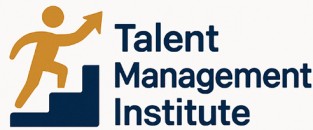
Understanding the Importance of Employee Insight
Recognizing the Value of Employee Insights
Understanding what makes your employees tick is crucial for fostering a productive and harmonious work environment. Employee insight surveys are a powerful tool in this regard, offering a window into the thoughts and feelings of your team members. By leveraging these insights, companies can enhance employee engagement and strengthen company culture.
Employee surveys are not just about collecting data; they are about building a dialogue between staff and management. When employees feel heard, their engagement levels rise, leading to improved performance and satisfaction. To truly know your staff, it's essential to ask the right questions, which we'll explore further in the crafting questions section.
Moreover, understanding the importance of employee insight goes beyond just knowing what your employees think. It involves interpreting their feedback to make informed decisions that benefit both the company and its employees. This process of interpreting and acting on survey results is vital for continuous improvement and team building.
For those interested in a deeper dive into how employee feedback can be effectively utilized, exploring 360-degree feedback questions can provide additional context and strategies.
Key Elements of a Successful Questionnaire
Essential Components for an Effective Employee Questionnaire
Creating a successful employee survey requires careful attention to the design of your questions. The goal is to gather insights that will genuinely help in improving employee engagement and building a cohesive team.- Focus on Clarity: Each question should be clear and concise to ensure your employees understand what is being asked. Avoid jargon that may confuse your staff, keeping the language simple to enable honest and thoughtful feedback.
- Relevance to Company Culture: Your questionnaire should reflect your company’s values and objectives. This alignment ensures the insights support your organizational goals and inform on areas that need development.
- Balance in Question Types: A mix of open-ended and closed questions can yield both quantifiable data and qualitative insights. For example, use Likert scales to gauge employee satisfaction and open-ended questions for deeper exploration.
- Address Different Aspects of Work Life: Make sure to cover various dimensions such as work environment, team dynamics, job satisfaction, and personal growth opportunities. This comprehensive approach provides a holistic view of your employees’ experiences.
- Inclusive Participation: Encourage participation from all levels of your team to get a well-rounded perspective. This can help in understanding the needs and expectations of different groups within your organization.
- Actionable Insights: Design questions that will yield actionable insights. By doing so, your company can take steps to enhance employee performance, which can be further explored through targeted improvement plans.
Crafting Questions that Matter
Asking Questions That Drive Meaningful Insights
Crafting questions that genuinely matter is pivotal. Employee engagement thrives when the questions are well thought out and relevant to the employees’ experiences. This not only encourages participation but also ensures that the data collected is actionable. The way questions are framed can significantly influence the information obtained, providing a clearer understanding of what resonates with your staff and affects their work. One effective approach is to develop a diverse range of survey questions that cover multiple facets of employee life. Here’s how you can structure these questions to get the best insights:- Icebreaker questions: These help ease into the survey and engage employees from the start. Simple queries such as "What’s your favorite part of your workday?" can set a positive tone.
- Employee engagement: Gauge how enthusiastic and committed team members are with questions such as "How well do you know your team’s objectives?"
- Work environment: Solicit feedback about workplace conditions, asking for instance, "Do you find your work environment conducive to productivity?"
- Company culture: Understanding employees' views on your company's culture can be invaluable. Ask "What aspects of our company culture do you think need improvement?" to gather honest insights.
- Team building: Generate insights on team dynamics with questions like "What activities help you in getting to know your team better?"
- Understanding challenges: Direct questions addressing day-to-day difficulties employees face can highlight areas needing attention. Examples include "What’s the most challenging part of your role?"
Utilizing Technology for Efficient Data Collection
Leveraging Technology for Streamlined Data Gathering
In today's digital age, employing technology in your employee surveys is pivotal to ensure an efficient and comprehensive data collection process. The right tools can transform how your company engages with your team members, making the survey process smoother and more effective. Firstly, selecting the best platform for your surveys is crucial. There’s a variety of options available that cater to different needs, ranging from simple survey creators to more advanced analytical tools. The choice of platform should align with your company culture and how your team members typically interact with technology. Utilizing online tools not only simplifies the distribution of your employee questionnaire but also helps in tracking responses in real time. This real-time data access can be instrumental in maintaining high employee engagement as it allows for quick reactions and adjustments when necessary. Additionally, technology aids in automating the data collection process. This minimizes manual input, which can be error-prone, and ensures a higher level of accuracy when collecting insights from your staff. The time saved from these automated processes allows HR professionals to focus more on interpreting and acting on survey results. Furthermore, mobile-friendly survey solutions can make a significant difference. As employees are increasingly accessing information on their mobile devices, ensuring that your survey is mobile-optimized is important for high response rates. By accommodating your employees’ favorite ways of accessing information, you make it easier for them to provide genuine insights. Lastly, these technological solutions often include features for protecting employee data, crucial for fostering trust among your employees. Data privacy concerns can deter participation, hence employing secure and transparent systems encourages honest responses. When crafted thoughtfully, using technology effectively in your employee insight endeavors can greatly enhance the overall team building and icebreaker questions that emerge, providing your company with valuable knowledge on staff engagement.Interpreting and Acting on Survey Results
Extracting Value from Survey Responses
Gathering employee feedback through surveys is only the first step. To truly harness the power of these insights, it is crucial to delve deep into the data and interpret the findings with precision. Here's how to make the most of your employee questionnaire results, transforming them into actionable insights.- Identify Trends and Patterns: With the multitude of responses received, focus on identifying common themes and recurring patterns. Whether it's feedback on company culture or suggestions for team building, recognizing these trends will help address widespread concerns effectively.
- Prioritize Actionable Insights: Not all feedback will demand immediate attention. Differentiate between the nice-to-have suggestions and critical issues that require urgent intervention. This strategic approach ensures that the most impactful changes are prioritized.
- Communicate Findings Transparently: Sharing key takeaways with your team not only fosters transparency but also encourages employee engagement. Employees appreciate knowing that their insights are valued and that their voice is being heard. Ensure communication is clear and concise, using bullet points or infographics for better clarity.
- Implement Changes and Monitor Progress: Acting on survey results is essential for building trust within your staff. Implement changes based on the survey insights, and regularly evaluate the effectiveness of these changes. This ongoing process of adjustment and improvement keeps the momentum alive and shows your employees that the company is committed to continuous improvement.
- Gather Feedback on the Process: Lastly, consider seeking feedback on the survey process itself. Understanding how the process can be improved will help in crafting better future surveys, ensuring they remain a valuable tool for gathering employee insights over time.
Overcoming Common Challenges
Addressing Survey Challenges with Strategic Solutions
When it comes to employee surveys, leveraging their full potential requires more than just understanding their importance and crafting thoughtful questions. While the initial steps of designing the employee questionnaire and collecting data are crucial, many organizations face hurdles in the latter stages, particularly when it comes time to interpret and act on those insights effectively. Here are ways to navigate these challenges:- Integration with Company Goals: Align survey results with broader company culture and objectives. By doing so, teams can ensure that the feedback collected fits into the bigger picture of improving employee engagement and satisfaction within the company.
- Overcoming Misinterpretation: Ensure that the insights from your employee surveys are clearly communicated to all stakeholders. Avoid misinterpretations by involving staff from different departments in the analysis phase. This will help present a well-rounded view of the data and prevent isolated understanding.
- Addressing Response Bias: Be aware of potential biases that can affect survey outcomes. Encouraging honesty in survey questions can be achieved by maintaining anonymity. This practice will yield more genuine insights, allowing companies to accurately gauge staff questions related to company policies or work environment.
- Handling Low Response Rates: An ongoing challenge in employee surveys is engaging staff to participate. Make survey participation as easy as possible and communicate the importance of their input in building a better workplace. Consider incentivizing responses or recognizing high levels of team engagement.
- Timing and Frequency: Evaluate the best time for conducting surveys to maximize participation and relevance. While too frequent surveys can lead to disengagement, long gaps might not reflect current employee sentiments. Establish a balanced schedule that aligns with company events and employee workload.
- Feedback Loop: Closing the loop is crucial for sustaining engagement. Let your team know that their feedback has been heard and is being acted upon. Share outcomes and planned improvements with the team, reinforcing trust and commitment to company development.













